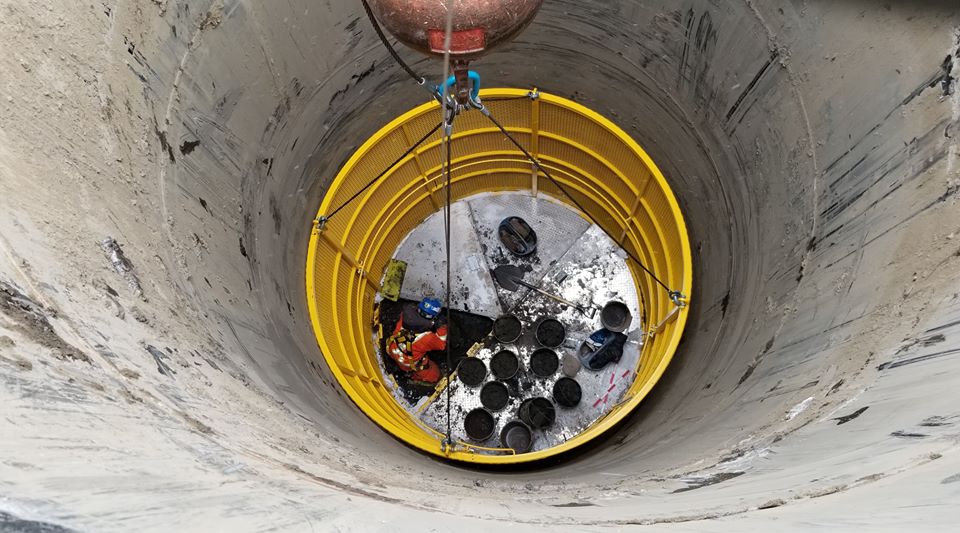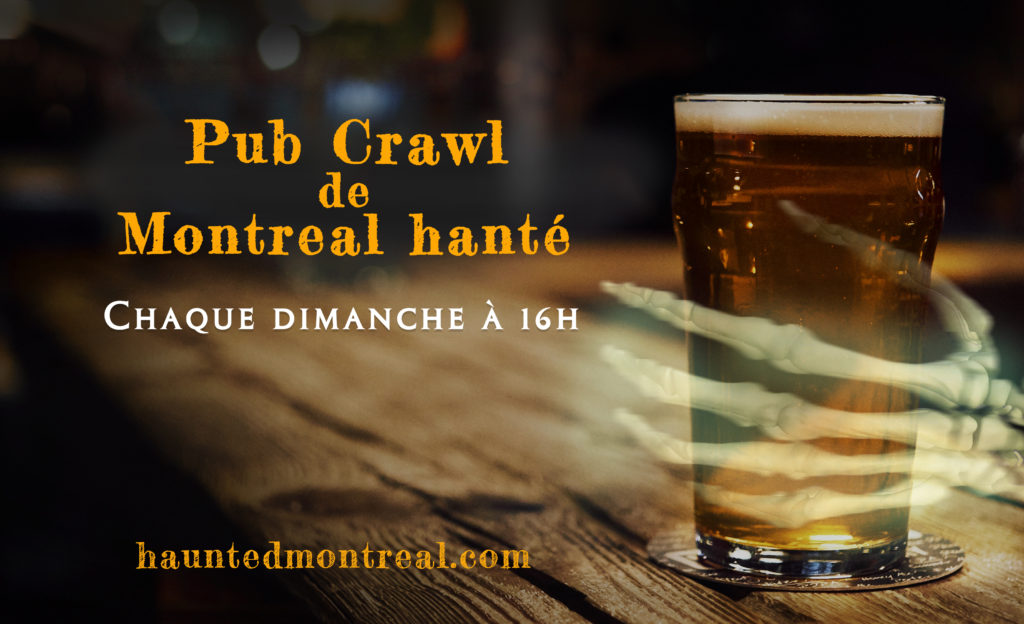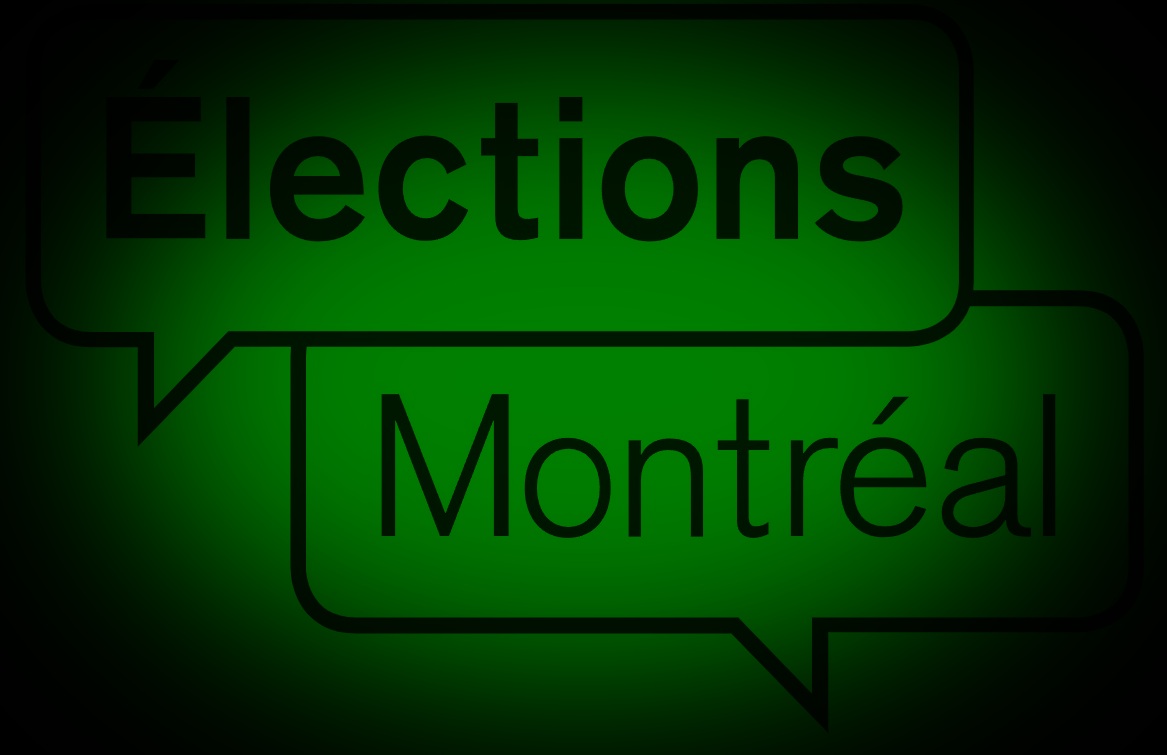Montrealers are heading to the polls on November 2 to elect a new mayor. While the citizens have the democratic privilege of voting, the Dead certainly do not. As such, Haunted Montreal will be representing them and making demands to the mayoral candidates on their behalf. Generally-speaking, the Dead want two things: to be remembered and to be respected.
Welcome to the fifty-third installment of the Haunted Montreal Blog!
With over 350 documented ghost stories, Montreal is easily the most haunted city in Canada, if not all of North America. Haunted Montreal dedicates itself to researching these paranormal tales, and the Haunted Montreal Blog unveils a newly researched Montreal ghost story on the 13th of every month! This service is free and you can sign up to our mailing list (top, right-hand corner for desktops and at the bottom for mobile devices) if you wish to receive it every month on the 13th!

Haunted Montreal is now in winter mode and is not offering a season of outdoor public tours until the spring. The good news is that we are pleased to announce that the Haunted Montreal Pub Crawl runs year round on Sunday afternoons. We are also looking for an indoor haunted location for our new Paranormal Investigation. Lastly, our ghost walks can still be booked for private groups, including Haunted Griffintown and Haunted Downtown. Haunted Mountain is not available due to dangerous icy conditions on Otsirà:ke / Mount Royal until it melts in May.
Our January blog examines the Réseau express métropolitain (REM) and asks whether it will become haunted due to an Irish Famine cemetery disturbance. The REM is a new automated light rail network under construction in the greater Montreal area. At a cost of $6.3 billion, it will include 26 stations and span the region.

In November, workers digging a hole for a pylon near the Victoria Bridge discovered the bones of over a dozen Irish Famine victims from 1847 at the site of the Black Rock. Given these Irish refugees were fleeing westward, it is entirely possible their disturbed spirits will come back to haunt the new electric train network.
Haunted Research
On June 12, 2019, Montreal’s Irish community gathered for a ceremony to bless the hallowed land at the Black Rock Famine cemetery, where an estimated 6000 ancestors of Montreal’s Irish community lied buried. The purpose of the ceremony was to bless the burial ground’s soil due to concerns about potential disturbances during the construction of the REM (Réseau express métropolitain).

It must be noted that the REM did not offer solid collaboration with the local Irish community. They only consulted two members (out of four) of the Irish Monument Park Foundation’s Board of Directors. Furthermore, the Irish Monument Park Foundation had a history of lack of governance and failed leadership. Fergus V. Keyes and Victor Boyle made a decision to green-light the desecration of the Famine Cemetery without even consulting the Board of Directors.
The REM’s engineers and architects took a gamble when they decided to plant a monorail pylon into the vicinity of the sacred Irish burial ground, which is the largest Famine cemetery in the world outside of Ireland. Because moving the train line away from the cemetery was deemed unfeasible, the gamble involved potentially disturbing Montreal’s Irish Famine Dead.

The tragic tale as to how this cemetery came into being is a result of brutal British colonialism, famine and some even say genocide against the Irish in the U.K.’s very first colony. The burial ground was hastily prepared during the typhus epidemic of 1847 and the dead were trenched anonymously.
After workers discovered the human remains of their ancestors while building the Victoria Bridge in 1859, they installed The Black Rock atop the Montreal Famine cemetery. The purpose of marking the cemetery was to protect it from desecration. For the full and terrible backstory about Black 47’s impact on Montreal, please read Haunted Montreal Blog #35 – The Black Rock.

As the REM workers went about their construction tasks, in December word broke that their pylon project had essentially pierced the cemetery. While the REM claimed that excavation was being done with extreme care and sensitivity, the fact remained that over a dozen of Montreal’s Irish ancestors were being dug up from the graveyard.

Generally-speaking, the Dead do not like to be disturbed, especially when their funerary marker, the ominous Black Rock, is engraved with the following words:
“To Preserve from Desecration the Remains of 6000 Immigrants Who died of Ship Fever A.D. 1847- 48.”

Not wanting the Famine Dead to come back to haunt the city, on December 9, I organized a hasty ceremony to offer a minute of silence to Montreal’s Irish ancestors. Their anonymous remains were being exhumed from their final resting place by careful and meticulous archaeologists in a tube-like machine.

I wanted Montreal’s Irish ancestors to know that we love them and that they are in our thoughts and prayers as they begin a second terrible journey, this time to a laboratory. When we get the remains back, there are plans to re-inter them as respectfully as possible given the circumstances.

To further complicate matters, Montreal Mayor Valerie Plante announced in November, 2019, that she wanted to co-brand Griffintown’s REM station after a divisive and controversial politician.
This sparked an outcry from the Montreal Irish community, which turned especially bitter when the Irish asked her to back off to mourn the ancestors being excavated – and instead she doubled down against the Irish community!

As an Ambassador of the City, Tour Operator and Montreal Destination Specialist, I sent her an Open Letter with dozens of media links about the scandal. Mayor Plante has not responded yet.

Haunted Montreal is asking our readers to politely ask Mayor Plante to rescind the unfortunate proposal by contacting her through her webpage. Please personalize your message and write from the heart.
Please also sign the petition here.
Despite my best efforts to assuage the Irish Famine Dead, there is no guarantee that their ghosts will not go on to haunt the $6.3 billion dollar REM network.

Indeed, I would say the likelihood is actually quite high that some of these spirits might choose to return to haunt the electric train network.
I imagine an REM commuter, sipping a Starbucks Café Latté while reading a newspaper, suddenly spewing their frothy java across the carriage as it pulls into Beaconsfield station! The appearance of a ghostly Famine refugee wearing tattered rags over a skeletal frame could easily trigger such a reaction!

There are many reasons to believe the REM could be already haunted upon its scheduled opening dates, in various stages from 2021 to 2023.
Firstly, I personally believe the western portion of the REM is going to be the most haunted part of the network should the ghosts decide to infest it. It is important to remember that these Irish refugees were involved in a westward migration to escape the British colonization, which was exacerbated by the Famine.

Many of the Irish refugees hoped to reach the United States of America, far away from the clutches of the British Crown and its dreaded colonization enforced by heavy-handed Redcoats.
Secondly, the death toll in Montreal was staggering. By the end of the epidemic in 1848, an estimated 6,000 Irish typhus victims had been “trenched” in the mass graves located next to the fever sheds in Pointe Saint-Charles.

To further the tragedy, almost 1000 Montreal residents also died of typhus, including at least eight Catholic priests, thirteen nuns, and seven Anglican clergymen. Lastly, the devoted mayor, John Easton Mills, also succumbed to typhus on November 12, 1847.
Mills had personally tended to the sick in the fever sheds and his fearless compassion earned him the sobriquet “Martyr Mayor of Montreal”.

Certainly the city’s former mayor, who is already reputed to haunt the site of Montreal’s first famine cemetery on the Lachine Canal, would be interested in a public works project like the REM. Could the ghost of our heroic mayor, John Easton Mills, be spotted riding on the system?
Another ghost who might ride the REM’s rails could be that of Catholic priest M. Gottefrey, who perished in the course of his duties assisting the Irish typhus-victims. Having contracted the deadly disease, he made a serious and deadly miscalculation while trying to receive his last rites.

The Annals of the Grey Nuns reports that on July 11th, 1847:
“M. GOTTEFREY, having to exercise his ministry at the convent, arrived in the evening, probably after returning from the SHEDS. A few of our sisters met him, he told them with his vivacious and joyous humour: “Courage, my dear sisters, the sufferings are short, but the reward is eternal.” In wishing goodnight to the superior whom he found very anxious and preoccupied with her patients, he said to her: “Take care to not kill yourself.” It was 6:30 in the evening. He directed himself towards the Church of Notre-Dame de Bonsecours to be given the Holy Sacrament which he wished to receive as the last rites.”

“Reaching the third floor of the sacristy and wishing to open the door giving passage to a gallery, he forgot, perhaps, or he did not know most probably that we had got rid of this gallery, and since he had made a great effort to open this door which we had taken care to nail shut sufficiently, he rushed into a drop of more than THIRTY feet high. We transported him to the Hotel-Dieu, where it was not long before he expired.” (pages 37-38)
According to paranormal experts, M. Gottefrey’s ghost already haunts Notre-Dame de Bonsecours Church, along with other spirits. Tourists have captured images in the stained glass windows that could very well be the good Father.

Given his tragic accident and death, some paranormal experts believe that he never crossed to the other side. Will the spirit of M. Gottefrey haunt the REM?
There is also the chance an anonymous, skeletally-thin Irish girl might appear. Clutching a tin cup and wearing a tattered nightgown, the poor girl might even ask the REM clients for some coins.

This emaciated young Irish girl was first spotted in late July, 1847. Montreal’s citizens began to panic when they spotted her begging on the corner of Notre Dame and McGill Streets. Clearly stricken with typhus and its accompanying dusky hue of the skin, she was “clad only in a nightgown and with a tin cup in her hand while a policeman was keeping the street clear of all pedestrians until means could be found to convey her back to the quarantine sheds.”

In his dissertation thesis, Ports of Recall: Memory of the Great Irish Famine in Liverpool and Montreal, Colin McMahon writes:
“For John Loye, [former] President of the United Irish Societies, the discovery of remains at the memorial site [in 1942] jogged memories of stories told to him by his grandmother, Margaret Dowling, who was a young witness to the arrival of Irish Famine refugees in Montreal. Loye recalled her describing the pitiful scene at the corner of Notre Dame and McGill streets.” (page 188)

Lastly, there are many reports and theories about some of the Irish refugees being buried alive. In the same thesis, McMahon observes:
“An even more unsettling anecdote survived the century to surface in 1942—told by a Mrs. Bergen to her friend Margaret Dowling, who then passed it down to her grandson, who finally relayed it to the Montreal Gazette. Stricken with typhus in 1847, Bergen “was believed dead and put in a coffin which was lowered in to the pit. Her husband, a quarantine subject rushed among the coffins and saw her skirt protruding through the lid of the coffin. He opened it to find she was still breathing.” Such stories reportedly “gave rise to the belief that many of the victims were buried alive as the Government wished to dispose of them to make room for fresh cases.” (page 188)

Those who were indeed buried alive are also likely candidates to haunt the REM, as are the Dead who were trenched anonymously in the middle of the night with no proper funeral.
Like jabbing a stake through the heart of a vampire, the REM’s pylon mimics this effect on an industrial scale, albeit through the heart of Montreal’s sacred Irish Famine cemetery at the Black Rock.

Who is to the say the Dead won’t feel invited to join commuters on futures rides of the REM heading westbound? In planting the pylon through the middle of the cemetery, one can say that Black Rock Station will be the only paranormal platform on the REM network that is used exclusively by the Dead.

Company News
Haunted Montreal is now into winter mode! For this first time ever, we will be operating year-round with our award-winning Haunted Pub Crawl, every Sunday at 3 pm in English and 4 pm in French.

Private tours are also available for Haunted Griffintown, Haunted Downtown, the Haunted Pub Crawl and our new Paranormal Investigation into the old Saint-Antoine Cemetery, weather-permitting for outside tours.
The Haunted Mountain Ghost Walk is not offered in the winter due to dangerous and icy conditions on the slopes.

Haunted Montreal would like to thank all of our clients who attended a ghost walk, haunted pub crawl or paranormal investigation during the 2019 – 2020 season!

If you enjoyed the experience, we encourage you to write a review on our Tripadvisor page, something that helps Haunted Montreal to market its tours.
Lastly, if you would like to receive the Haunted Montreal Blog on the 13th of every month, please sign up to our mailing list.
Coming up on February 13: Notre-Dame-de-Bon-Secours Chapel
The oldest church in Montreal, the Notre-Dame-de-Bon-Secours Chapel, is one of the most haunted locations in Old Montreal. Not only are there the bodies of several nuns buried in the crypt, but it is also the location of Saint Marguerite Bourgeoy’s sacred corpse, a miraculous statue, and a famous 1848 painting called “Le Typhus” by Theophile Hamel. There are also several reports from tourists at having photographed either a man in a tuxedo or a priest from the outside of the church’s stained-glass windows. Some believe the ghost captured on film is none other than Famine priest M. Gottefrey, who suffered a terrible injury in the church hours before dying in the summer of 1847 while caring for Irish refugees.

Donovan King is a postcolonial historian, teacher, tour guide and professional actor. As the founder of Haunted Montreal, he combines his skills to create the best possible Montreal ghost stories, in both writing and theatrical performance. King holds a DEC (Professional Theatre Acting, John Abbott College), BFA (Drama-in-Education, Concordia), B.Ed (History and English Teaching, McGill), MFA (Theatre Studies, University of Calgary) and ACS (Montreal Tourist Guide, Institut de tourisme et d’hôtellerie du Québec). He is also a certified Montreal Destination Specialist.




Comments (0)